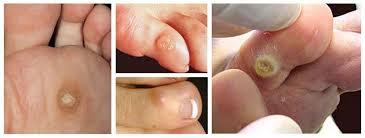Do you need a Podiatrist, Chiropodist or Foot Health Professional. Confused about where to go to get the correct care needed to treat your feet or foot problems. At the Hub New Mills, Caroline is able to meet most of your foot care needs or will direct you to further medical help if she thinks that it is an appropriate action to take.
What is a podiatrist, Chiropodist and a Foot Health Professional.
Podiatrists provide comprehensive advice and treatment in all areas of foot health. They also are specialists in the way we walk (gait analysis) and are able to give advice and treatment on all aspects of foot pathology.
You may well be confused as to the difference between the terms chiropodist and podiatrist. There is no difference they are essentially the same word.
Podiatry services are available across the United Kingdom on the NHS based on clinical need. Most podiatry NHS services now ration and restrict the delivery and availability of footcare to “high risk groups.” This generally means patients with diabetes, on high dose steroids, rheumatoid arthritis and other systemic diseases that leave them vulnerable to foot injury. Children (paediatrics) do still have access to NHS podiatry but waiting lists can be excessive and the actual orthoses issued can be limited due to cost issues.
What can a Foot Health Practitioner do ?
The major part of uncomplicated foot and leg care is within the capability and remit of the Foot Health Practitioner. Immediate access by self-referral and early availability of their services make the Foot Health Practitioner working in the private sector an important resource for the general public.
Much of the work is routine and often requires repeat at determined intervals. In the majority of the cases seen and attended by the practitioner there is little or no morbidity of the leg and foot. In many cases, there is need for routine maintenance occasioned by diabetes mellitus, arthritic hands, eye troubles, ankylosis of the spine, obesity, pregnancy, etc. Many patients will simply have difficulty reaching their feet for maintenance – others appreciate the help of a practitioner who they can trust to trim and maintain their nails properly. Many of the conditions encountered are directly attributable to the ageing process. Hip and knee pathologies contribute considerably to the need. As a trained observer, the Foot Health Practitioner contributes to the health of the populace by screening and alerting other practitioners to indicated diabetes mellitus, potential ulceration, malignancies, and other conditions
What can a Foot Health Practitioner do ?
The foot health practitioner performs work which may include but is not limited to:
- nail trimming and correction
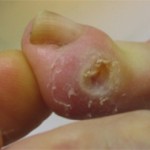
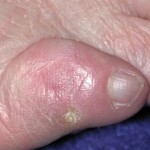
- fungal nail treatments
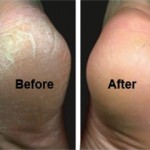
- skin conditions
- corns
- calluses
- nail reduction
- foot and heel pain
- verrucae
- blisters
- athletes foot
- management of ingrowing nail
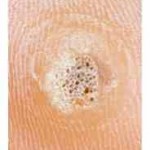
- diabetic foot assessment and monitoring
- treatment of fungal infections
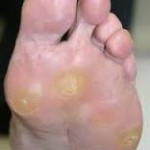
- general advice on foot care and foot wear
What common conditions do Foot Health Practitioners see?
- Corns and calluses; While everyone develops a callus at one time or another. Serious calluses and corns can cause foot pain when the thick and hardened skin forms pressure and causes friction.
- Heel pain: Heel pain can be caused by many things. including heel spurs(protrusion of bone from the heel bone), plantar fasclitis and Achilles tendinitis.
- Plantar fascitis: This painful condition occurs when the soft tissue fibers of the fascia on the bottom of the foot are inflamed.
- Mortons neuroma: A neuroma is a benign tumor or growth of nerve tissue that can cause a tingling or burning sensation in the foot as well as numbness.
- Athlete’s foot: Fungus on the feet causes athlete’s foot.The fungus tends to grow in humid, dark and warm environments, and can cause dry skin, itching, inflammation and blisters.
- Flat feet: Feet are meant to absorb the shock of walking and running. Flat feet are less capable of absorbing shock, which leads to foot pain.
- Diabetic ulcers: These open sores or wounds affect an estimated 15% of people with diabetes. They usually occur on the sole of the foot and if left untreated can become infected, possibly leading to eventual amputation of the foot.
- Fungus nails: Sometimes fungus can grow underneath nail surfaces. This fungus is called onychomycosis and causes the nail to grow darker and smell bad. If left untreated, the infection can spread to other toes, and cause pain that can interfere with daily routines.
- Hammer toes: Hammer toes usually affect the first joint of a toe and cause toes to be permanently bent. they can cause foot pain, redness and swelling in the affected joint, pain in the ball of the foot, formation of corns on the top of the joint and restricted movement.
- Warts: Warts are caused by viruses, and when they appear on the foot they are called plantar warts.
- Ingrown toenails: When toenails dig into the toes, they can cause considerable pain. Sometimes the nails can grow into the toes and cause infection.
- Sports injuries: Podiatrists can help diagnose and treat common sports injuries, including ankle and foot sprains, tendinitis and Achilles tendon ruptures
- .Bunions: These bumps usually show up on the joint at the base of the big toe, causing pain, swelling, roughened skin and redness. hey can be caused by faulty foot development, the way you walk, your foot type, your shoes, or by foot injuries, congenital deformities and neuromuscular disorders.
Caroline at The Hub New Mills is qualified as a Foot Health Care Professional and is able to treat :
Corn removal / in-growing nails and nail correction / warts/verrucae / fungal infections / cracks and fissures / diabetic foot care / callus and hard skin removal, nail cutting and is a very friendly person
If Caroline finds that your problem is above the remit of her knowledge and qualifications she will refer you to either your GP or a friendly local podiatrist

